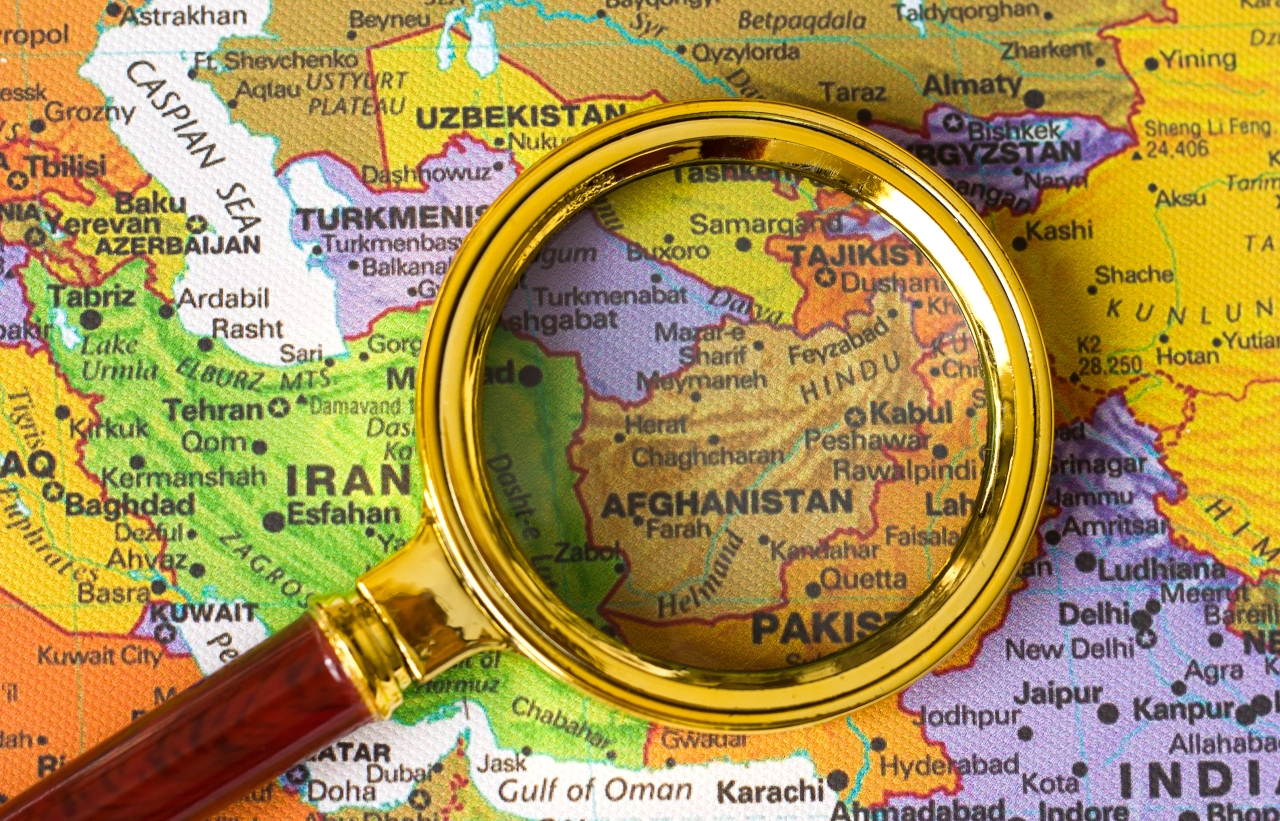In 1889 an old Frontier hand Rudyard Kipling published his famous lines “Oh, East is East, and West is West, and never the twain shall meet”. Provided his maxim had been heeded rather than subjected to cancel culture those who fought “savage wars of peace” would not be compelled to charge into the valley of death without reasoning why and called to answer at least “Till Earth and Sky stand presently at God's great Judgment Seat”.
Policies that led to that were not anchored to reality of which very few in a driving seat were aware or able to comprehend impartial advices served by those with lesser vested interests, political or otherwise. Whether in future cards are confoundedly shuffled with no political or intellectual courage is subject to prowess not only of the decision-makes but to the milieu they find themselves in or at least their ability to critically address the herd instinct.
Apart from incompatibility of high-minded attempts to mould a new incarnation of the Afghan state as well as the society in accordance with the Western liberal-democratic pattern foreign decision-makers and implementors failed to grasp that not only their military presence but also the Afghan Government prompted by the West failed to win legitimacy in the eyes of the Afghan society similar to the partial modernisers of the past, viz., Shah Shujah in the 19thcentury as well as King Ammanullah and the PDPA regime in the 20th century.
Moreover, the Taliban victory was also a vengeful comeback of the rural power brokers who in a role reversal imposed their strict vision of Islam on urban population. Anatol Lieven aptly identified the Ibn Khaldunian trend at play in these developments (Anatol Lieven, An Afghan Tragedy: The Pashtuns, the Taliban and the State, Survival, 2021, Vol. 63, No. 3). However, there is more to that with the centuries-old Afghan pattern of supra-tribal unification spearheaded by Islamic coalition often leading to an incipient state-formation. In the case of the Taliban it manifested itself in a spectacular manner (Sergei Andreyev, Development Stages of Islamic Movements in the Pashtun Tribal Environment: The Case of the Rawshaniyya and Beyond, Iran and the Caucasus, vol. 25, 2021).
Since the reign of Emir Abdur Rahman Khan (1880-1901), whose legacy still shapes the country, Afghanistan has been a rentier state relying on foreign aid to fill its coffers. “Only 12 per cent of Afghanistan's total land area is arable. Due to acute scarcity of water for irrigation, only half of this arable land area is cultivated each year. In simple terms, Afghanistan has always lacked an indigenous economic basis for viable state formation. This external aid has given the Afghan state the coercive means to weld the heterogeneous tribal society together by distributing the foreign largesse and playing one tribe off against the other”. (G. D. Bakshi, Afghanistan as a rentier state model: Lessons from the collapse, Strategic Analysis, 1998, vol.22, No. 5, p.785)
Even with that assistance Afghanistan often found itself on the verge of food insecurity. That has deteriorated since the Western withdrawal.
The World Bank identifies the following overlapping drivers of the post-August 2021 complex economic crisis:
- cessation of aid (previously equal to 45 percent of GDP) driving a sharp fiscal contraction, leading to collapsing demand (total public spending is expected to have declined by around 60 %);
- major disruption to basic services (including basic health and education), which had previously depended on international aid support;
- a loss of hard-currency aid inflows, which had previously financed a very large trade deficit (equal to around 30 % of GDP;
- loss of access to the overseas assets of the Central Bank (around US$ 9.2 billion);
- the cessation of international payments by correspondent banks undermining the capacity of firms to pay for imports or receive payment for exports, disrupting remittance flows, and leaving international humanitarian organizations and NGOs unable to pay salaries or contractors within Afghanistan;
- loss of Central Bank access to supplies of Afghani and USD banknotes creating a liquidity crisis in the banking system, therefore, constraining firms’ and households’ access to working capital and savings held in commercial banks;
- rapid decline in investment confidence, given pervasive uncertainty;
- loss of human capital, as tens of thousands of highly-skilled Afghans fled the country and new restrictions were imposed on women’s participation in the private and public sector.
The severe drought affecting most of the country since early 2021 has crippled crop production and livestock leading to critical food insecurity in both rural and urban areas. Every year Afghanistan needs more than 6 million tonnes of wheat with 4.5 million tonnes harvested in the country in a good year with the rest being imported mainly from Kazakhstan and Russia.
As of May 2022, 22.8 million people in Afghanistan are acutely food insecure. The situation is compounded by the forecasted reduction of Humanitarian Food Assistance (HFA) after the month of May. HFA is expected to decrease from 38% of the population receiving rations to 8% due to lack of funding. As of 24 June 2022 the United Nations has only received one-third of the $4.4 billion it requires to meet humanitarian needs in Afghanistan in 2022. This shortage of funds is also complicated due to the formal banking system blocking transfers as stipulated by the UN and US sanctions with the Humanitarian Exchange Facility not yet fully operational and the Taliban attempting to channel aid to the groups they favour and interfere with humanitarian agencies budgeting, operations and hiring policies.
In the longer run these imbroglios unfolding into a complex humanitarian emergency are compounded by demographic trends. The population of Afghanistan, which currently is estimated as 40,754,000 people is projected to grow at a rate of 2.33% per annum until it plateaus in 2084 at the level of 77,000,003. The country is seeing negative net migration due to internal conflict; however, its fertility rate of 4.56 births per woman still pushes the population up. Because of the high fertility rate, the population is very young, with a median age of 18.4 years. 83% of people over 18 years old are unemployed while 3 million households are in debt with 51% of disposable income spent on food purchase. In 2020 GDP per capita was US$ 516,7.
Literacy is at 38.2% of the population over the age of 15 years, with males at 52% and females at 24%.
A high percentage of uneducated youth and population growth outpacing economic development provide a fertile ground for violent unrest and/or mass migration.
In terms of migration, 2012-2021 saw 4,519,522 Afghans moving abroad and 5,149,245 returning from abroad. This trend changed in 2021 when 1,358,770 people left the country and only 575,818 came back. However, in April-June 2022 161,940 returnees outnumbered 150,775 émigrés.These numbers deal with the movements to and from Pakistan and Iran only since migration to and from other countries after the August 2021 evacuation of 124,000 Afghans who worked for the NATO-led coalition forces in Afghanistan declined.
Therefore, in order to survive the Taliban need an external sponsor for their nation-building endeavour. With their almost universal pariah status they may only rely on non-state actors sympathetic to their harsh interpretation of Islam and draconian policies. And those are radical Islamists of either militant jihadist persuasion or at least of a pretty obscurantist outlook. Due to an armed confrontation between the Taliban and the Islamic State al-Qaeda with its history of association with the Taliban is ideally positioned to fill the shoes of such a sponsor. This sponsorship will drive the Taliban towards the internationalisation of their initially parochial agenda. That may result in the push for an engineered spill over of Islamic militancy directly affecting Pakistan where its own Taliban movement is deeply entrenched and implicitly Central Asia and China whose radical Islamists had found a safe haven in Afghanistan. Pakistani security establishment will face a hard choice whether to stop their decades long support for Afghan Taliban; thus, compromising their strategic depth considerations or risk a further conflagration in the Pashtun-populated areas of their country.
There are already some worrying indicators that the Taliban may have already started to move in this direction; thus, the Taliban ruler Mawlawi Hibatullah Akhundzada was reportedly titled as caliph, and the movement pledged to fight their jihad until the Day of Judgement. That is an implied admission that they do not expect victory, viz., the global triumph of Islam; however, may be inclined to take the holy war beyond the borders of Afghanistan as they claim to control the entire country; however feeble this assertion may be, especially since no government ever controlled all corners of this pretty ungovernable world. Religion-inspired fervour nudged by foreign benefactors may obfuscate the risks associated with this extending. Moreover, some members of al-Qaeda have been appointed to government positions, not the top brass ones, but still.
In case the Taliban fail to consolidate their grip on power, Afghanistan is likely to fragment once again with local politics and Hobbesian bellum omnia contra omnes dominating the tribal Pashtun South and the predominately non-Pashtun North revering to the Chinghizid pattern of governance. The watersheds are likely to define parcellated necks of the woods with economic activities streaming along the valleys rather than across mountain ranges; therefore, gravitating towards foreign markets rather than the national one. Opium poppy is likely to remain a lucrative cash crop solidifying fragmentation as local powerbrokers will be disincentivised to share out their confined dominance.









